Due to their physical characteristics, VVG and VVGng cables are widely used in enterprises and in everyday life. At the same time, they have their own characteristics and nuances of installation.
Installation in the ground.
As required by the sixth section of the Electrical Installation Rules, the cable laid in the ground or water must be provided with sufficient mechanical strength, that is, equipped with armor. Cables of VVG and VVGng brands do not have armor, which means that their laying is allowed only with the use of additional protection from mechanical damage - in pipes, ducts, tunnels, etc.
Laying on trays and boxes.
Cables of the VVG and VVGng brands are distinguished by sufficient resistance to ultraviolet radiation, therefore, they can be laid in an open way, including on trays. This method of laying is common in industrial premises, the installation height of trays (ducts) must be at least 2 m from the floor level, the distance between the cable and the pipeline must be at least 0.1 m, and if the pipeline with hazardous liquids (gases) - at least 0.25 m. The maximum number of cables laid on the tray depends on the cable section and the width of the tray, with a single-row laying, the clear distance between the cables is maintained at least 5 mm.
Fastening the cable to the tray is not required for horizontal laying; for vertical laying, it is carried out every 1 meter. In addition, based on local conditions (room class, aggressiveness of the environment, crowds of people), they can either apply VVG cable ng, or VVG, the permissible number of cables in a bundle also depends on this, the VVGng cable does not spread combustion even when laid in bundles.
With this cable laying, it is possible to connect flanged immersion heaters, this is very important, since the devices are complex and require careful handling. Flanged immersion heaters are indispensable in applications that require the heating of large volumes of water, especially when it comes to running water.
Wall lining.
High impact resistance external environment, allows you to lay the VVG (VVGng) cable in an open way along the walls, with a non-combustible or hardly combustible coating (brick, plaster), hang it on strings, cables. In this case, horizontal laying must be carried out at a distance of 100-200 mm from the cornice, parallel to the line of intersection of the ceiling and walls. Vertical laying is carried out no closer than 100 mm to doors or windows. In the absence of the likelihood of mechanical damage, this cable can not be equipped with additional protection, and the VVGng cable can be used in residential premises.
Wall lining.
This method wiring is characteristic of residential premises, the VVG (VVGng) cable is adapted for this installation method and is often used in the installation of both power and lighting networks without the use of a separating layer. If parallel cable laying is necessary, the distance between them should not be less than 3 mm when using VVG, and laying in VVGng bundles is allowed.
Regardless of the installation method, an important feature of the PVC cable is the temperature environment if the operating temperature range is large enough (-50 ̊С - +50 ̊С), then the air temperature during installation should not be lower than -10 ̊С (otherwise, cable heating is required). The minimum bending radii of the cable must be taken into account:
Cable products of this type have become widespread and have a wide range of applications, there are many subtypes of the VVG cable, and in each case, the choice of cable and installation method must meet the requirements of the Electrical Installation Rules, the requirements of the Fire Safety Rules and SNiP.
VVG-ng - copper flexible cable in flame retardant polyvinyl chloride insulation. It has both round and flat design, which is convenient for some types of installation. To date, the VVG-ng brand cable is considered the most common cable product for wiring, both in residential and industrial premises.
Cable brand VVG-ng according to technical specifications has a different performance of single-core and multi-core cores, and according to GOST, the mass of sections of the conductive core. The VVG-ng cable is designed for working AC voltage 660V and above, frequency 50 Hz. The permissible temperature on the conductive core is + 70 ° C, and the operating range is not limited for the territory Russian Federation. Permissible temperature during installation of the VVG-ng cable is not lower than -10 °C.
The bend during installation of the wire should be 10 diameters for single-core cables, and 7.5 diameters for multi-wire cables. The service life of the cable of this brand is more than 30 years.

Types of installation of cable brand VVG-ng
1. Open way:
Based on the technical characteristics of the cable, its open laying on surfaces and structures made of non-combustible or slow-burning materials such as gypsum, concrete, brick, plastered surface, etc. is allowed. Open laying of the cable along suspended structures, such as a cable, etc., is also not excluded. providing reliable laying and not allowing mechanical impact on the cable such as sagging and stretching.
If there is a risk of mechanical damage to the cable, additional protection must be installed. Also, additional protection should be used when installing the cable in an open way on combustible wooden surfaces and installation should be carried out using protection, such as a cable channel, corrugated hose, metal hose, pipes, etc.
2. Cable laying on cable-supporting structures:
Cable-supporting structures include pipes, ducts, etc. This mounting method is more suitable for industrial premises than for residential. When laying a cable in production, one should take into account the categorization of the premises in which the cable and cable-supporting structures are being installed, as well as environmental factors.
On cable-supporting structures, it is allowed to lay the VVG-ng cable in a bundle. The number of cables in the bundle is determined by the factors listed above and the technical characteristics of the structures, as well as the rules for the installation of electrical installations.
3. Hidden cable laying VVG-ng:
Hidden is the most common way to install cable in residential areas. The cable is laid in grooves, under plaster, in voids, etc. This method does not have the possibility of mechanical damage, and therefore does not require additional protection. Exceptions to the emptiness of the walls of wooden houses, in which hidden laying of cables in non-combustible materials, pipes, metal hoses, etc. is allowed. The correctness of the installation of the hidden laying of the VVG-ng cable is determined by the regulatory documents for hidden electrical wiring.
4. Cable laying in the ground:
The VVG-ng cable is not recommended for laying in the ground, since it does not have natural protection against mechanical stress, but it is possible to lay such a cable in the ground with additional protection such as pipes, tunnels, HDPE pipes, etc.
Any of the installation methods must be carried out in accordance with regulatory documents, technical characteristics of electrical equipment, rules for the installation of electrical installations (chapter 2.1 Electrical wiring) with the involvement of qualified personnel with access to this type of work.
Articles of the cycle "The whole truth about electrical work in a wooden house":
- The whole truth about electrical work in a wooden house in accordance with the PUE and PTEEP.
- Wiring input to wooden house SIP wire.
- Wiring input to a wooden house with a VVGng-LS cable.
- Wiring input to a wooden house with a VBBSHV cable.
- Wiring input to a wooden house with a VVGng cable in the ground.
- Electrical installation of internal open wiring in a wooden house.
- Electrical installation of internal hidden electrical wiring in a wooden house.
- How to perform the separation of the PEN conductor in an electrical installation (ASU, main switchboard).
- Electrical installation of the ground loop.
Today, one of the most popular power line connections is underground cable entry, which is a huge success in almost all corners of the world. This is due to the fact that by powering any structure, including a wooden house, it is possible to ensure the safety of its inhabitants as much as possible, significantly increase the duration of the operation of conductors and save appearance house landscape, in which there are no poles and sagging wires. At the same time, in terms of price and quality ratio, this method of electrical installation is the most effective.
Considering that in Russia one or three phase input, in most cases, is carried out using the TN-C grounding system, then as an underground cable entry, you can use a two or four-core VVGng cable, the cross section of which is selected according to the planned electricity consumption, but not less than 10mm 2 .
Keeping in mind that splicing an electrical cable in hidden places it is strictly forbidden, therefore, the entire length of the cable, we select it in such a way that it corresponds to the distance of the wiring line from the insulators on the pole to the metering or protection board with a margin of 1 m on each side. And as a protection of the cable itself from external mechanical damage, we will prepare steel and non-pressure pipes. Steel pipes will be used in open areas of the cable, that is, along the pole and along the wall of the building, if the entry is not through the foundation or basement.
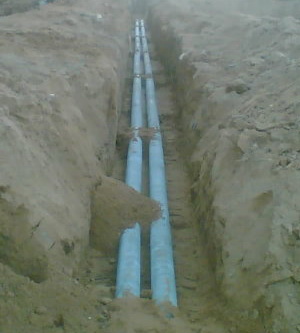
For the pole - we use a steel pipe, the length of which should correspond to the distance from the insulators to the depth of the cable with a margin of 50 cm for bending, and the diameter is 2-3 sizes larger than the cable diameter. For a wall, it is enough to use a pipe that satisfies the distance from the depth to the point of entry of the electric cable into the room plus 50 cm for the bend (Fig. 1) with the above diameter. For an underground route - we use an asbestos-cement or polymer non-pressure pipe.
But at present, the most convenient is the HDPE technical polyethylene pipe, selected in such a way that a steel pipe can fit tightly into it. Thus, it can be compressed with a special clamp in order to create airtight conditions for the cable to run through the pipe channels.
Very often, the inner edge of the pipe at the cut point is ground at an angle to prevent the cable from “catching” during pulling. This will facilitate the wiring and replacement of the electrical cable. In addition, HDPE pipes, with minor subsidence of the soil, can be deformed without kinks. Therefore, it is allowed to lay without soft sand filling under and around the pipe, but without containing stone in the ground, construction debris and other solid particles.
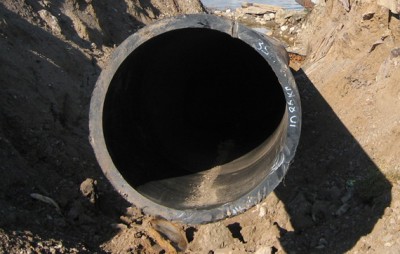
It is allowed to lay the VVGng cable in the ground without additional protection against mechanical damage (pipes, red brick), if the conditions for laying the cable correspond to environmental conditions. With such a cable laying in the ground, the laying depth cable line must be at least 1 meter from the ground, however, when crossing the cable line highways, you need to use asbestos-cement pipes with a depth of at least 1 meter from the surface of the earth.
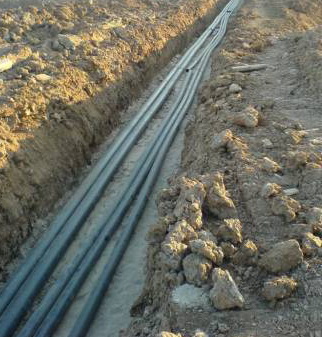
To enter the house - use the segment metal pipe(sleeve) with a diameter of 2-3 sizes more than the diameter of the corrugation 20 cm long more than the thickness of the wall or foundation. If the internal cable laying is carried out openly, then the corrugated pipe will perform protective functions indoors, the length of which must correspond to the wiring line from the cable entry point to the metering or protection device.
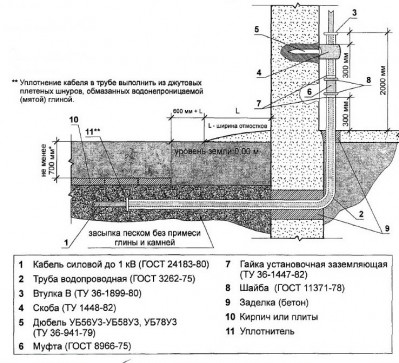
If the entrance to the house will be carried out through the foundation or the wall of the basement, then we install the sleeve with a slope of 10-15 degrees towards the street, in order to avoid the formation and leakage of moisture inside, and the diameter should be 2-3 sizes larger than the diameter of the HDPE pipe . Around the outer surface of the sleeve we close up with an easily removable solution.
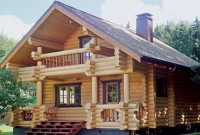 When all necessary materials prepared, you can start earthworks. Given that the depth of the cable should be at least 0.7 meters from the surface of the earth, therefore, a trench swarm according to these parameters with a width of about 20 - 30 cm or the width of a bayonet (shovel) with a slope of at least 5 degrees towards the pillar , in order to avoid the accumulation of groundwater and sedimentary water near the foundation.
When all necessary materials prepared, you can start earthworks. Given that the depth of the cable should be at least 0.7 meters from the surface of the earth, therefore, a trench swarm according to these parameters with a width of about 20 - 30 cm or the width of a bayonet (shovel) with a slope of at least 5 degrees towards the pillar , in order to avoid the accumulation of groundwater and sedimentary water near the foundation.
After that, we proceed directly to the electrical installation of pipes. We lay a polyethylene pipe at the bottom of the finished trench so that one end enters the sleeve pre-installed in the wall of the basement or foundation (for underground entry). If the soil is rocky, then first we fill in a layer of sand or sifted earth about 10 cm thick and tamp it, we do the same after laying the pipe in the prepared trench.
Having completed the wiring of the pipes into the finished trench, we proceed to pulling the cable into the pipes. This can be done with a pull cord. If the cable route is small, then you can try to pull the cable without auxiliary equipment. Then, from the side of the column, we insert the bent end of the steel pipe 20-30 cm inward into the cavity of the HDPE pipe and crimp it with a special clamp at a distance of 10 cm from the end of the HDPE pipe, we do the same from the side of the ground input, if applicable. It remains to fix the steel pipes along the cable wiring line to the pole (and to the wall of the building).
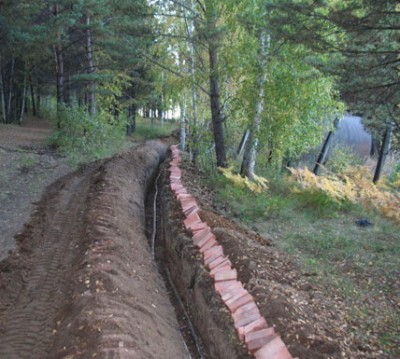
Having completed all the above electrical installation work, you need to make sure that when laying the cable you did not damage its insulation and the cable is ready for safe operation. To do this, it is required to carry out a set of electrical measurements, namely: measuring the insulation resistance, measuring the circuit between grounded installations and elements of a grounded installation, that is, testing metallic bond. After conducting electrical measurements and making sure that the cable is not damaged, it is necessary to fill it in a trench with a sifted 15 cm layer of sand and compact it. Then, on top of the compacted sand, lay a signal tape, which serves to alert diggers to the presence of a live cable in the ground. We do the final backfill after connecting the house to the electrical network.
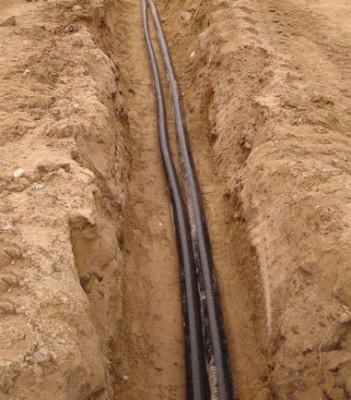
The end of the cable, which is located indoors, is enclosed in a corrugated pipe. At the same time, the technological hole on the outside of the foundation is sealed with cement mortar, and on the inside (or for ground entry on both sides), with an easily removed mortar. If the cable is laid openly indoors, then the corrugated pipe with the cable can be fixed to wooden wall using mounting brackets or clamps specially designed for this.
It is also allowed to carry out open cable laying on easily combustible bases in pipes, flexible metal sleeves, boxes. If you need to make a hidden gasket input cable, then it is required to tighten it into a metal pipe or lay a cable in a metal blind box from the technological hole to the metering board. In this case, the wall thickness of the metal pipe must be at least 3.2 mm. If it is impossible to perform such wiring, it is allowed to separate the cable on all sides from wooden surfaces a continuous layer of fireproof material (plaster, alabaster, cement mortar, concrete, etc.), at least 10 mm thick. Currently, it is strictly forbidden to covertly lay a cable in a metal conduit, corrugated pipe or plastic box on parts, walls and structures made of combustible materials (wood, chipboard, fiberboard, etc.).
After all electrical installation work is completed and the cable is laid from the overhead line support to the metering board, you can connect the cable cores on the overhead line support to zero and phase lines using special clamps. Even though there is no tension load on the cable, each core of the cable must be fixed to the appropriate line insulator, but without tension.





